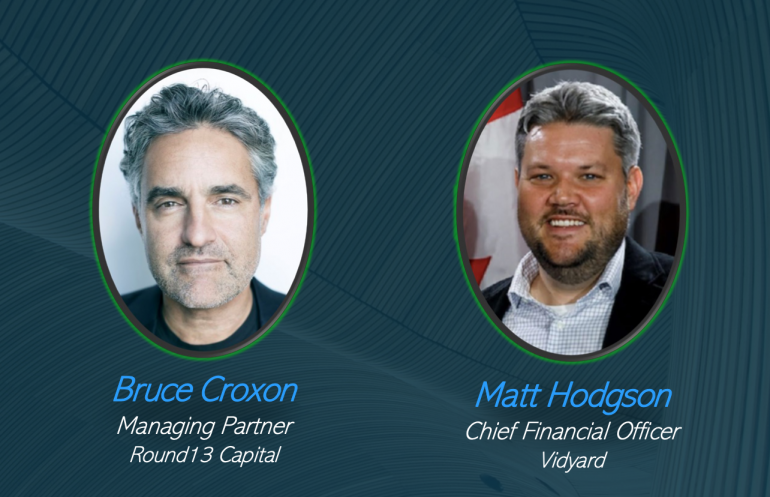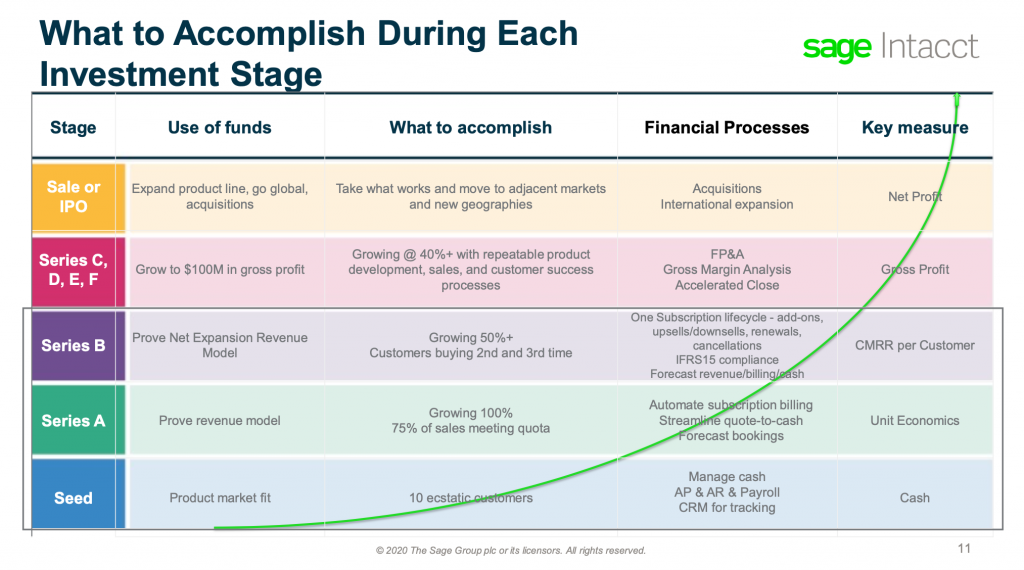As economies begin to re-open following COVID-19 closures, tech companies are looking at their own recovery. A recent Sage Intacct survey of over 100 SaaS company founders found that, in the current environment, resiliency is top of mind.
In particular, SaaS founders want to know how to build resilience into their business models to survive any future shocks that might occur. Looking deeper into what resilience means for SaaS companies, Sage Intacct identified that the key components are reducing the cost to acquire a customer, reducing customer churn, and reorienting systems within an organization to empower real-time financial data collection and the agility to act on data insight. This increased demand for centralized financial data leads to a shift in how the finance department operates, changing from reporting centre to insight generator.
David Appel, the head of subscriptions and SaaS at Sage Intacct, recently hosted a webinar with Bruce Croxon, managing partner at Round 13 Capital, and Matt Hodgson, CFO of video-marketing startup Vidyard, to explain what SaaS founders can do to build resilience into their organizational models.
“No vanity metrics”
For any company, only one thing really matters: profit. In the SaaS world, profitability is a function of two key metrics: the cost to acquire a customer (CAC), and the rate at which you lose customers (churn). Croxon said that when it comes to CAC and churn, “You can’t treat it as a vanity metric.”
“If you’re converting customers but not keeping them, you’re filling a leaky bucket.”
– Bruce Croxon,
Round13 Capital
It sounds simple, but there are layers to each metric. For example, startups should also pay attention to CAC payback, or how long it takes to make back the money spent to acquire a customer. In order to properly calculate this, startups must include all revenue that comes in from a customer over their lifetime (LTV, or lifetime value), including upsells and cross-sells. In turn, they must also calculate the costs not just for marketing and sales but also for any resources dedicated to customer onboarding, support, and success. This, said Hodgson, is called a “fully-loaded CAC.”
From there, Hodgson said startups have to look at CAC for each type of customer.
“Separating out your acquisition costs by division or by [customer] segment will really help as well,” said Hodgson, noting that startups might discover a discrepancy where some customers are wildly profitable – thus hiding an unprofitable segment within a larger average.
After full CAC analysis and segmentation, startups are ready to do the same thing for churn, which Croxon said is an exercise in getting a true picture of the whole company’s financial outlook.
“If you’re converting customers but not keeping them, you’re filling a leaky bucket,” Croxon said.
Hodgson said that a major component of churn reduction is about embedding and integration the product into the customer’s workflow. The trick to churn reduction, then, is identifying the moments when customers are most open to ingraining a product into their workflows. Hodgson shared that, for Vidyard, that moment is in customer onboarding. He said that if Vidyard can show customers all the unique features of the Vidyard platform during onboarding, that customer is far more likely to use Vidyard and far less likely to cancel their subscriptions.
“It’s about knowing your customers”
A customer may be open to integrating new products into their workflows at any stage in the customer journey, so companies must ensure there’s enough cash flow to get to that moment and earn the customer’s loyalty. While Hodgson said that many companies will have to tighten their cash flows in the recovery stage, Croxon argued that startups can’t efficiently adjust their spending until they know how their customers behave. In either case, startups will need to reorient data collection to understand customer behaviour and learn when it’s time to release – or even step on – the gas.
“When you look at the health of a company, you need to look at the gap of what it’s costing you to get a customer versus what the customer is worth,” said Croxon, who added that if a startup’s unit economics are positive, they may want to seek outside investment capital to continue growing even in a pandemic. He then noted that if a startup needs to, it can always cut marketing and sales spending to drive a stronger bottom line if economic conditions worsen, but should get healthy growth while it can.
Whether the decision is to cut spending or to step on the gas, Hodgson encouraged everyone to listen to the data. He said it’s easy to get defensive – particularly when the data shows a decision turned out poorly – but founders must use data as a way to validate assumptions and tests, not be something you take personally.
“From cost police to business enabler”
With a renewed focus on real-time financial data, the finance department comes to the forefront. While each client-facing department like marketing, sales, and customer success will have its own metrics, finance has a full-picture view of the customer journey.
Appel illustrated this point by sharing how Vidyard leveraged real-time data through its finance department to create a more resilient business. The initial goal for Vidyard was an internal finance project to help the company close its financial books faster, as it was taking upwards of 15 days.
Switching platforms to Sage Intacct meant that Vidyard got more real-time data, which led to the finance team reducing the time-to-close by over 70 percent. The real-time financial data also gave Vidyard’s executive team more insight into how customers pay and where expenses were going. This insight helped Vidyard iterate and try new ways to attract customers – which ultimately reduced its CAC by 20 percent.
This kind of switch could only have happened with real-time data, since the previously long wait times meant much of the data was out of sync and out of date by the time anyone saw it. The story didn’t seem to surprise Bruce Croxon much, though, as he’s seen the impact of real-time data analysis in multiple companies.
“We’re in a golden age in the fact that the data is so abundant,” said Croxon. “If you’re willing to put in the work, the answers can be clear.”



